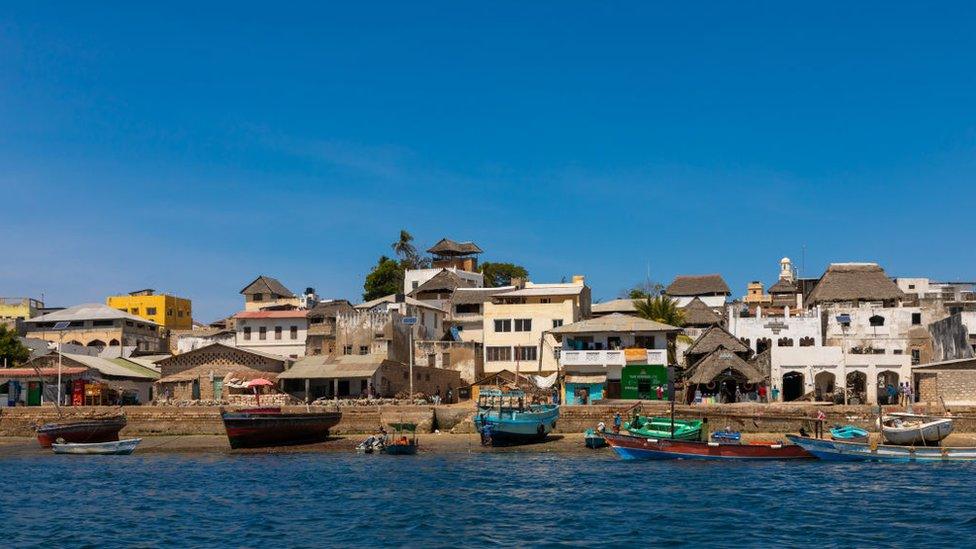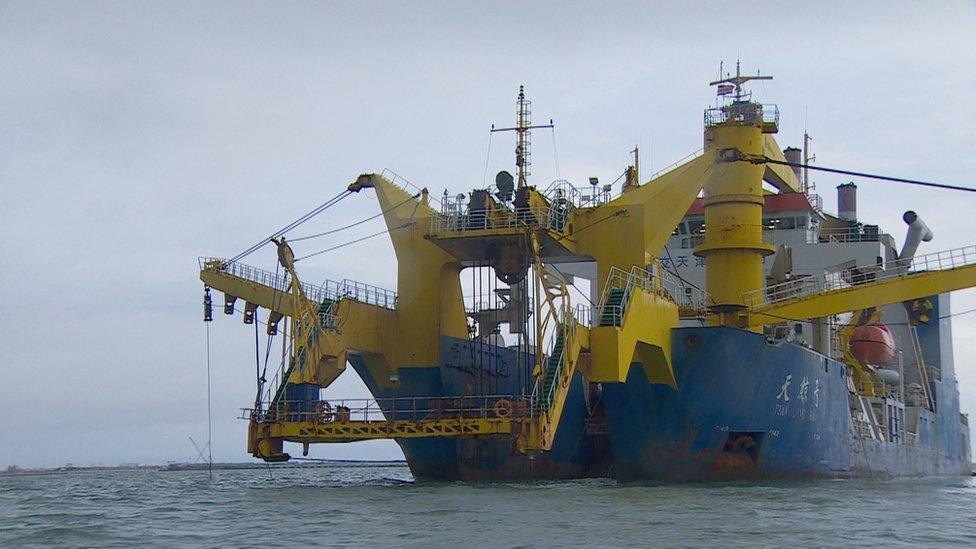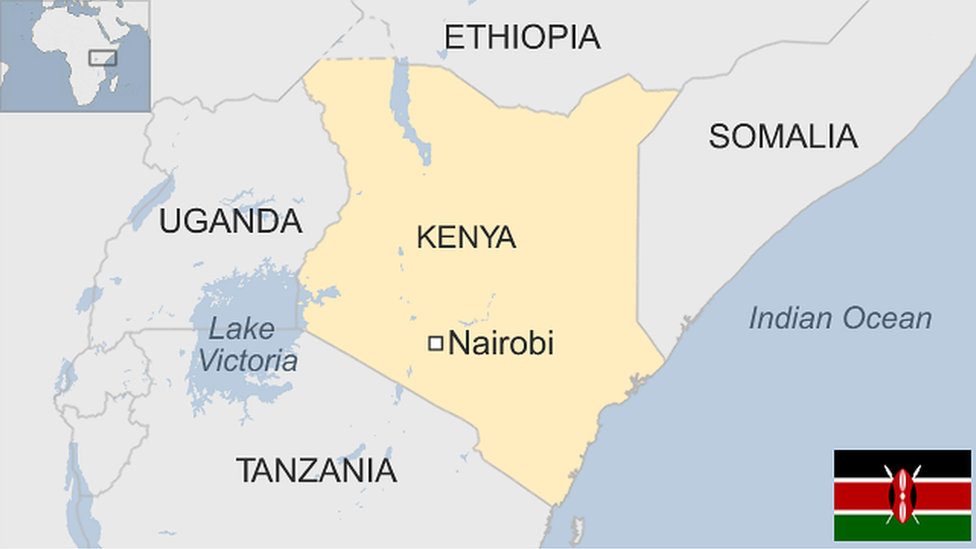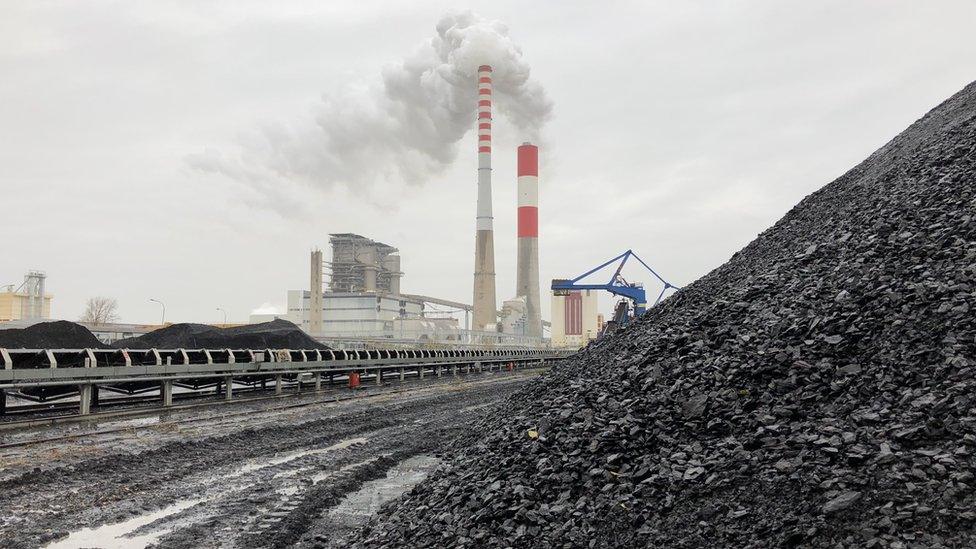Row over Chinese coal plant near Kenya World Heritage site of Lamu
- Published

Lamu is the planned site of Kenya's first coal-fired power plant
Campaigners in Kenya who fear their country is turning its back on its green goals are hoping to stop construction of a coal plant that would increase greenhouse gas emissions by 700%.
Activists in Kenya are marking World Environment Day with a protest against plans to build the country's first coal-fired power station.
At least two-thirds of Kenya's electricity is currently generated by renewable resources and it has pledged to reduce its small carbon footprint by nearly a third over the next decade.
But the planned power station to be built by Chinese contractors with borrowed money would increase emissions by a factor of seven - and Kenya would have to import the coal.
Campaigner Raya Famau Ahmed is hoping to stop construction of the coal plant

The town is renowned for its distinctive architecture.
China has made a commitment to reduce its reliance on coal, but at least a quarter of the hundreds of coal fired power stations being built or planned to be built around the world are being financed by China.
Critics say that by building these plants China is outsourcing its fossil fuel use by providing a market for its coal and encouraging it use in other countries.
The new plant will sit alongside an ambitious new $25.5bn (£20bn) development on the Kenyan coast at Lamu - an historic 700-year-old fishing and trading town, which is a Unesco World Heritage Site.
The Lamu Port South Sudan Ethiopia Transport (LAPSSET) corridor project includes a vast 32-berth container port, an oil terminal, road and railway links, and a "resort city".
The first phase of the port building project is almost complete.
Chinese dredging vessels are cutting a deep channel in the bay and are using the sand and rocks to reclaim land and build the first three container ship berths, which stretch for almost a mile (1.6km).

Part of the seabed is already being dredged to build a container port
The work is yet to start on the road and rail links, leaving the prospect of a state-of-the-art container port for some of the world's largest ships isolated on a remote stretch of coast near the Somali border.
'The fish are gone'
Fishermen in Lamu say the construction has already had an impact on their livelihoods.
"Before we would put out one net and catch maybe 500kg of fish, but now we can put 10 nets and get only 50kg so we've lost a lot," said Somo Somo, who has fished here since he was a child.
"The construction makes a lot of noise, they cut the mangroves - the fish breeding area - and destroy the coral reef where the fish go to put their eggs, so the fish have gone to another place."

Local fishermen say building work is destroying fish breeding areas
Court cases have led to promises of compensation for the fishermen and the farmers whose land will be used for the coal plant - but activists want it stopped.
Surveyors have staked out a vast area for the power station which the locals call "the box". Most of the smallholder farmers who worked the land have already been evicted.

You may also be interested in:

"We were told we would be paid and that raised our hopes but we were not paid at all," said Ali Abdallah, who is still tending to a maize field in "the box".
"We don't have food and our only option is to rely on this land and farm so that we can feed and educate our children - we have no other support."
'Disastrous project'
Most of Kenya's electricity is currently generated by renewable sources and the country has committed to reducing its already small carbon footprint by a further 30% by 2030.
But the Lamu coal plant alone will represent a seven-fold increase in Kenya's annual greenhouse gas emissions.
The country is currently producing a large surplus of electricity and the new power station is predicted to increase its capacity by 44%.

What are Kenya's main energy sources?
Hydroelectric: 36%
Geothermal: 29.1%
Diesel: 31.2%
Gasoil: 2.4%
Wind: 1.1%
Cogeneration: 0.1%
Coal: 0%
Solar: 0%
Import: 0%
Generic Backup Capacity: 0%
Source: Kenya Energy Regulatory Commission, 2018

Yet in May 2017, while on a state visit to meet President Xi Jinping in China, President Uhuru Kenyatta's government signed a deal with a Chinese construction company to build the power plant.
A complex financial arrangement has to be approved before construction can begin, and a court also has to rule on a challenge against the project.
"We are wondering why they want to implement this project because we have signed a green agreement at Paris - our president signed that," said Raya Famau Ahmed, who is campaigning against the plant.
"But down here they want to implement this disastrous project and we are really worried."

Fishermen and farmers have been promised compensation
It's not just Kenya that intends to add coal power - hundreds of plants are planned around the world, many of them with Chinese financial backing.
The UN's top diplomat Antonio Guterres was recently very clear about his view on coal-fired power stations.
"Stop the construction of new coal plant by 2020 - we want a green economy, not a grey economy in the world," he said.
The Kenyan government did not respond to a request for comment ahead of the court ruling which is expected in late June 2019.
- Published4 July 2023

- Published22 November 2018
